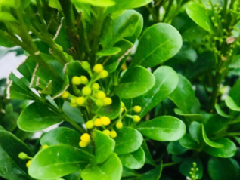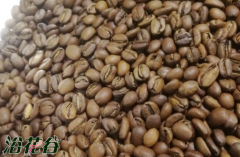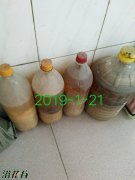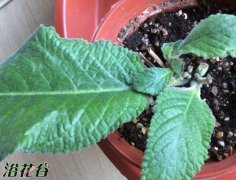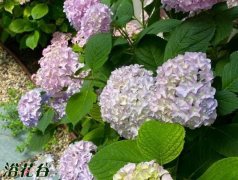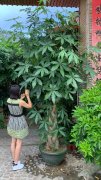How to deal with why clematis has frozen seedlings
The price of clematis has come down in recent years, and many flower lovers have raised them, but it is also very depressing to encounter stiff seedlings. Many flower buddies are asking why clematis have stiff seedlings during this period.After treatment, after replanting, the seedlings of clematis will not move or die for a month or even a few months. This is a dead seedling.
There are two situations of clematis stiff seedlings, true stiff seedlings and false stiff seedlings. The former are mostly seedlings that are less than one year old, and the roots of the seedlings are weak, which are actually stiff seedlings; the latter are seedlings that are more than one year old, and the seedlings are smallBut strong, mostly dormant, not to mention it.
To understand why clematis seedlings are stiff, we must start with the growth characteristics of clematis. Under normal circumstances, clematis grows very rapidly, almost every day, and it takes only two months to climb the shelf in one month.Flowering is not impossible. But once the top is topped, when the buds germinate and grow again, it grows slowly and abnormally. As the so-called swelling and dying, it also shows the liquid inside the growing clematis cane.Flow is very active.
When the root system of the clematis is weak, experienced florists will advise you not to top, let alone break up the original soil lumps and change pots. Why is this?
1. The seedlings are very slender and tender, the buds at the nodes are slightly invisible, and the root system is weak. Once topped, the buds are difficult to germinate. Over time, the body fluid in the seedlings stops flowing, loses vitality, and the tendency of stiff seedlings is formed.
2. After the seedlings break up the soil lumps, the root hairs are damaged and the surrounding environment changes. It takes time to restore the root hairs or adapt to the new soil environment. During this time, the body fluid in the vine stops flowing, and the seedlings lose their vitality.Stiff seedlings, the root hairs have recovered, it's good to say that the root hairs cannot be recovered under the new environment, there is only a dead end.
Although I know the cause of the dead seedlings, but sometimes the dead seedlings are inevitable, especially after the cuttings take rootfake plantAnd during the period of planting, the root environment is changed greatly. Without sufficient experience, the seedlings will transition quickly and smoothly in each stage, and they will stably enter the state of rigid seedlings. This is the problem that the rooting of clematis cuttings is easy to survive..
But, does the clematis have a stiff seedling even if it is over? But it is not. Careful florists will find that the seedlings that haven't been moving for a few months are not only immortal, but their roots have grown a bit, desperate at the same time.There is still a bit of hope. Why is this? The two words I have to say here are "balance." A stalemate is a stalemate, and a stalemate is also a balance. This is the stalemate of Miao and Gen, and the balance of input and output.The input is the nutrition and water absorbed by the root system, and the output is the nutrition and water consumed by the seedlings to maintain their livelihoods, hereinafter referred to as the input and output. Although the seedlings lose their vitality and form a state of rigid seedlings, they retain water under air circulation and sunlight.Transpiration is still consuming nutrients, and the weak root system can only meet this consumption without wilting, and the dead seedlings will continue to develop. The root system will grow by itself in a healthy soil environment and gradually break the deadlock.The quality and the environment will have different durations, ranging from one month to six months or even longer.
In order to break the deadlock as soon as possible and get out of the deadlock state, we need artificial help for it, specifically as follows:
1. In order to prevent stiff seedlings or get out of stiff seedlings as soon as possible, a good cultivation medium is first required. Clematis can survive in acid and alkaline soils, but it prefers slightly alkaline soils.Like most flowers and plants, the root system of clematis also likes fertile, loose, breathable and draining soil. Its root system is more fleshy, so it is afraid of waterlogging and large pots. Its root system is long and strong, so it prefers deep pots and shallow loading. Its root systemLike to be cool and afraid of sultry, so avoid exposing the basin wall.
2. Breaking the balance between input and output can improve the rigid seedlings, so the seedlings with multiple nodes can be trimmed off several nodes after serving the pot, leaving only the bottom 1-2 nodes, under the premise of the same inputReduce the output, make the excess nutrients act on the buds, and get out of the dead seedling state.
3. If there are no extra nodes to trim, you can only increase the input. The method of fertilization alone is not safe and effective from experience. The weak root system is easily fattened, and the absorption capacity is not enough to break the deadlock.Therefore, we still have to start with the growth of the root system. There is a saying called "wet grow seedlings to dry to promote roots." The theoretical basis of this sentence is that the growth of seedlings requires a lot of water, and under sufficient humid conditions, the root system does not needMore growth can easily meet the needs of plants, and the root system will not grow by itself. On the contrary, in order to obtain more sufficient water, the root system must grow deep and entangled to obtain water, and the root system will fill the whole pot to find water., Proper water control for a longer period of time will accelerate the development of the root system. When the root system grows, the water and fertilizer will gradually keep up, and sufficient energy will be transformed into vitality, and the dead seedling state will be broken immediately.
4. In the state of rigid seedlings, the resistance of clematis becomes poor. Avoid heavy fertilizer, flooding, exposure to the sun, continuous rain, and do a good job in soil disinfection and disease prevention. Mild sunlight and good ventilation will reduce the diseaseoccur.
5, 101 and Minoluo are not omnipotent. Without the above conditions, no matter how good potions are, they can’t help. Under the premise of having the above conditions, they can play a certain auxiliary role.
6. The clematis cutting roots should not be too wet in the cutting bed or in a small cup one week before the fake planting, and try not to damage the root system during the fake planting, and the loose soil should not be too compacted.After that, use 1000 times 101 or 100 times Minolta to water for the first time. Keep the seedlings in a humid, cool and ventilated environment for one week. In the second week, it is semi-dry and semi-humid to scatter light for curing. In the third week, apply thin fertilizer and start the wind and sun.Chance of small stiff seedlings.
7. Fake stiff seedlings are in a semi-dormant state, mostly due to unsuitable temperature, control water and fertilizer for maintenance, and wait patiently.
The above is a bit of personal iron raising experience, I hope to help those new friends who love iron, if you have better suggestions and experiences, welcome to share and learn together. Finally, I hope that every flower friend who loves iron can raiseGood iron in one hand.
- Related knowledge
- How to spend the winter with clematis silver coins
- How to raise clematis seedlings
- Clematis will wither and dormant in summer
- Clematis Justa
- How many types of pruning of clematis Dahe re-pruning in winter
- How about the clematis, Miss Kyoko
- Introduction of clematis blue pompons information
- Second type clematis pruning different idea
- How often does the clematis change the pots?
- Which pot is better for clematis deep pot or shallow pot
- Will the pocket coconut bloom?
- Processing method after ranunculus flower
- Is periwinkle suitable for indoor cultivation? There must be sunshine
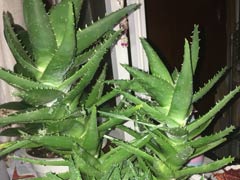 10-year old pile of aloe vera in Everbright City how to trim
10-year old pile of aloe vera in Everbright City how to trim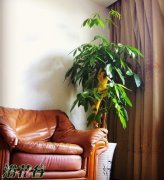 How often do you water the fortune tree
How often do you water the fortune tree- Method of artificial pollination of lemon graphic
- Family fattening experience of flower friends
- How to branch longevity flower picture
- Editor's recommendation
- How to raise money tree
- How to keep Bougainvillea blooming
- Can you water the flowers with expired milk?
- Crab claw lotus crab claw orchid, fairy finger flower breeding and conservation
- The cultivation method of Catharanthus roseus four season plum
- Milan's maintenance method
- Five Attentions for Asparagus Bamboo Maintenance
- Common shade-loving plants
- The variety and color of roses
- Why doesn't the longevity flower bloom?

